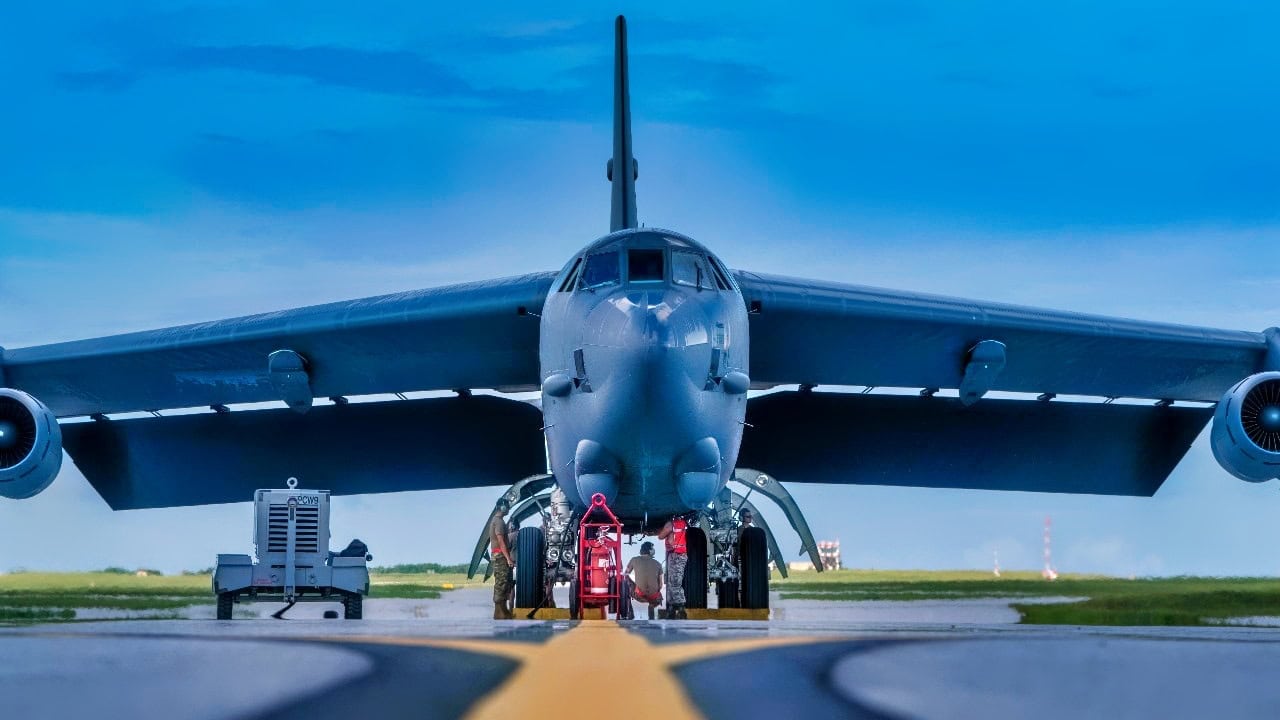Summary and Key Points: The B-52 Stratofortress, America’s iconic strategic bomber, has served since 1955 and remains a critical U.S. Air Force asset.
-Despite its age ‘problem’, continuous upgrades to weapon systems, radar, electronics, and avionics have kept the bomber lethal and effective in modern conflicts.
-From Operation Desert Storm and Iraqi Freedom to ongoing global deployments, the B-52 has proven its versatility in strategic bombing, close air support, and deterrence missions.
-Its extensive payload capacity and long-range strike capability underscore its unique value, while recent operations near Russia highlight its continued role in reinforcing NATO allies, projecting power, and deterring adversaries worldwide.
The B-52 Problem: Age Could Mean the End of this Old Bomber
The famous B-52 Stratofortress is the most long-serving bomber ever in the history of the US armed forces. The bomber keeps getting upgraded over and over that one could argue that this platform is almost an entirely different plane than what was conceived of so many years ago.
B-52: A History
The original B-52A flew in 1954, and the B model entered service in 1955.
A total of 744 B-52s were built over the history of the program.
The last production model, a B-52H, was delivered in October 1962.
And, as the story goes, this bomber just kept evolving. The first 102 B-52H’s were delivered to Strategic Air Command in May 1961.
The H models carry up to 20 air-launched cruise missiles.
It can also launch conventional cruise missiles, a capability demonstrated in several campaigns that began in the 1990s with Operation Desert Storm.
One of the most recent such instances was during Operation Inherent Resolve in 2016.
What Makes the B-52 So Powerful
The aircraft’s deadly capacity to degrade and decimate ground forces was most notably demonstrated during Operation Desert Storm when it was used against troop concentrations over a wide area, fixed installations, and bunkers.
In the process, these air strikes caused massive damage to numerous units and destroyed the morale of Iraq’s Republican Guard.
The destruction of the aircraft was so overpowering that Iraqi soldiers began to watch for the signs of any US or coalition drones.
These drones were a dreaded sight to these troops on the ground in that as soon as an Iraqi position was spotted by one of them, a B-52 strike was imminent.
While a Pioneer RQ-2A was assessing damage from naval gunfire at targets on Faylaka Island near Kuwait City, several Iraqi soldiers signaled their intention to surrender to the unmanned aircraft during a low pass.
It was the first time enemy soldiers had ever surrendered to an unmanned aerial vehicle. (They were later captured by US ground troops.)
The Long Reach of the BUFF
Several years following the Iraqi operation – this time in early September 1996 – two B-52Hs hit Baghdad power stations and communications facilities with 13 AGM-86C Conventional Air-Launched Cruise Missiles, or CALCMs.
This was while participating in Operation Desert Strike. While hitting these targets was not anything out of the ordinary the parameters of the mission were.
At that time, this was the longest distance ever flown for a combat mission. From take-off to landing back at base it was a 34-hour, 16,000-statute-mile round trip mission from Barksdale Air Force Base, Louisiana.
The B-52s returned to this theatre of operations again in 2003 during Operation Iraqi Freedom and launched 100 CALCMs in one night alone on 21 March 2003.
Today only the H model is still in US Air Force inventory and has performed more recently in the 2016 operations against ISIS forces in Syria and Iraq.
These strikes were the first time the aircraft had flown missions in this region in more than a decade.
During this operation these B-52s flew over 1800 combat sorties.
In Today’s News
The long-standing bomber acts as a sign of American airpower even to this day.
More recently, two B-52s took off from RAF Fairford in Gloucestershire on 27 February. This mission was the most recent flown out of the Cotswolds base, which has a forward-deployed contingent of four of these bombers currently stationed there.
The two aircraft – callsigns PLOW41 and PLOW42 – reportedly took off at 0540 hours.
Radar maps available online show one of their possible routes was to fly north before banking northeast, then heading east over the Netherlands and then over Poland, then over Turkey, and returning to base shortly before 1700 hours.
This latest Bomber Task Force mission occurred just days after a B52H flew within 50 miles of the border with Russia.
This was done in concurrence with celebrations for Estonia’s Independence Day on 24 February, which is also the three-year mark of Russia’s illegal invasion of Ukraine.
The intended effect was to show support for Estonia, which is seen as one of the NATO nations most at risk of aggression from Russian President Vladimir Putin.
The four B-52s arrived at RAF Fairford from Minot Air Base in North Dakota earlier in the month and had already flown missions over Europe and the Middle East.
According to the US Air Force and NATO command, these missions were planned to deter potential adversaries and support Washington’s allies.
About the Author: Reuben F. Johnson
Reuben F. Johnson is a survivor of the February 2022 Russian invasion of Ukraine and is now an Expert on Foreign Military Affairs with the Fundacja im. Kazimierza Pułaskiego in Warsaw. He has been a consultant to the Pentagon, several NATO governments and the Australian government in the fields of defense technology and weapon systems design. Over the past 30 years he has resided in and reported from Russia, Ukraine, Poland, Brazil, the People’s Republic of China and Australia.

